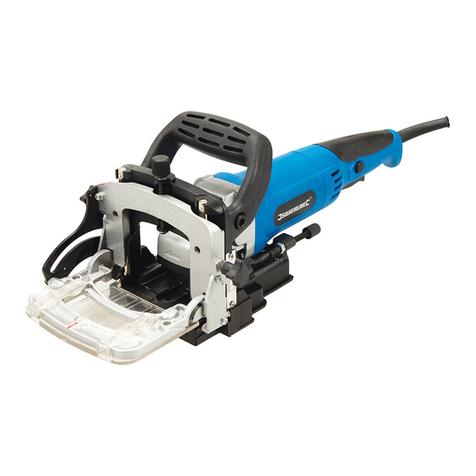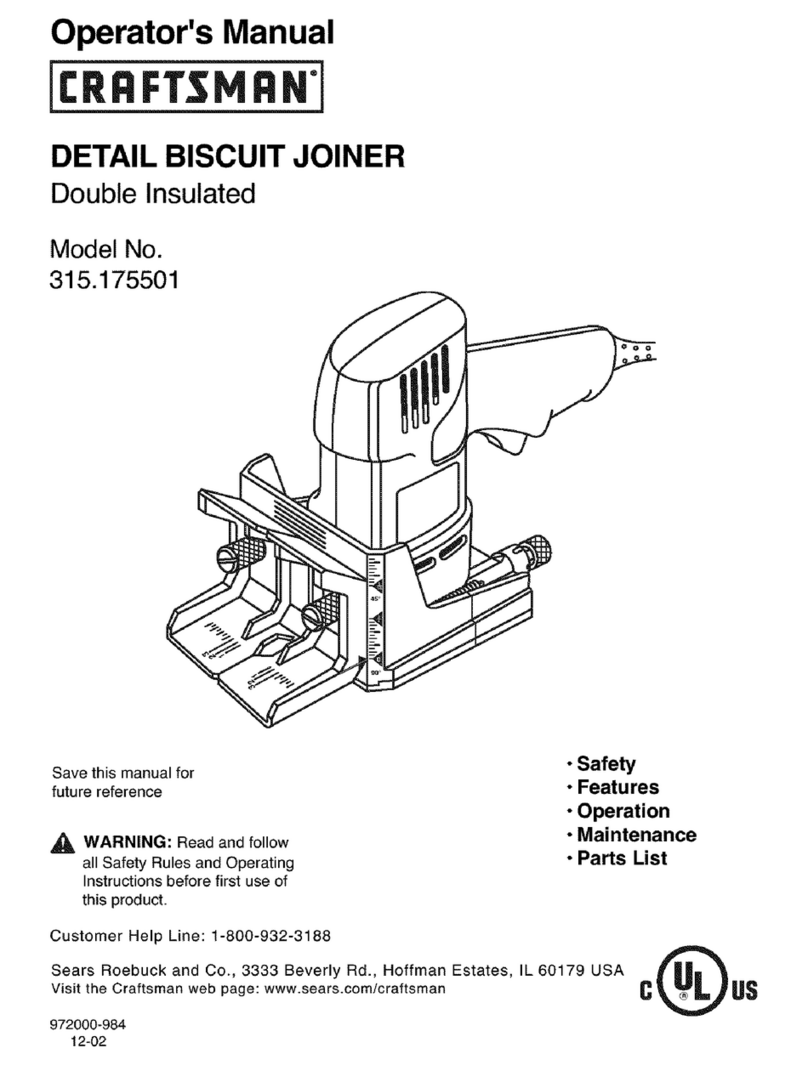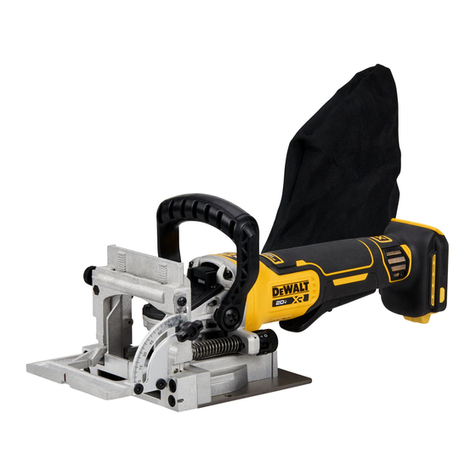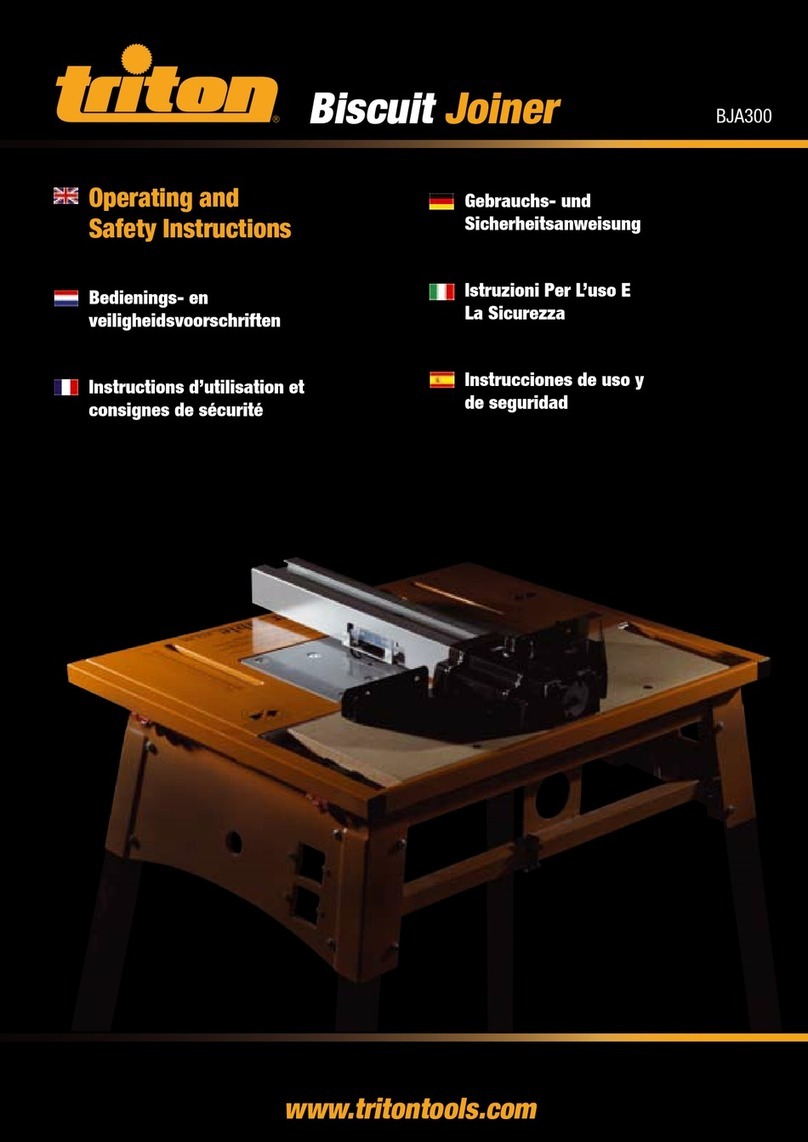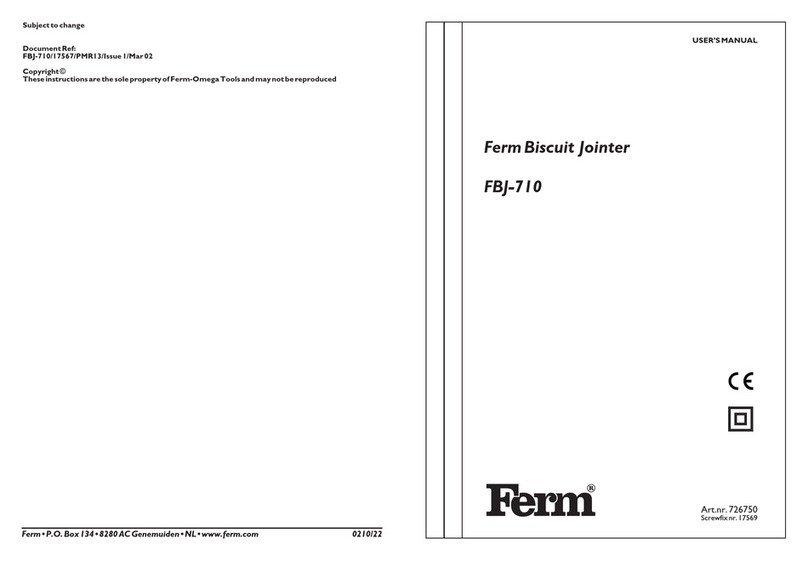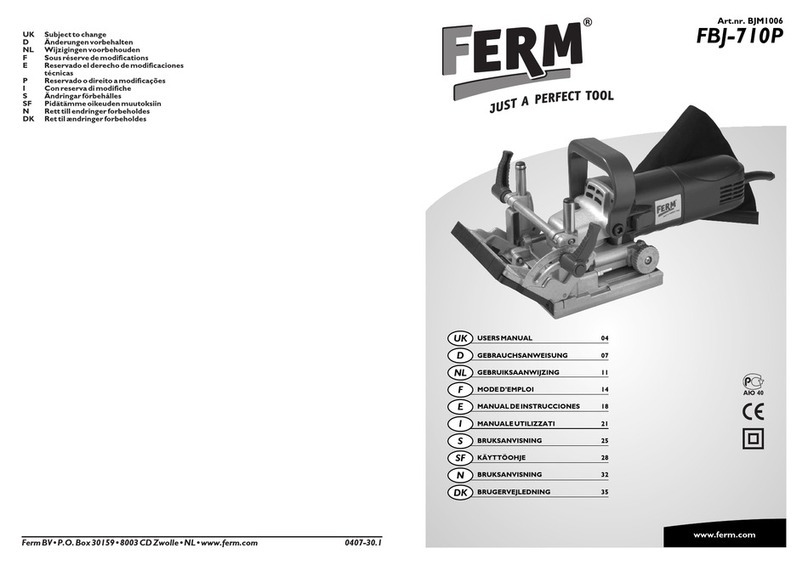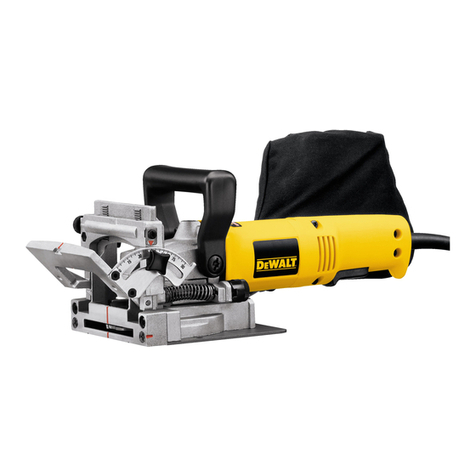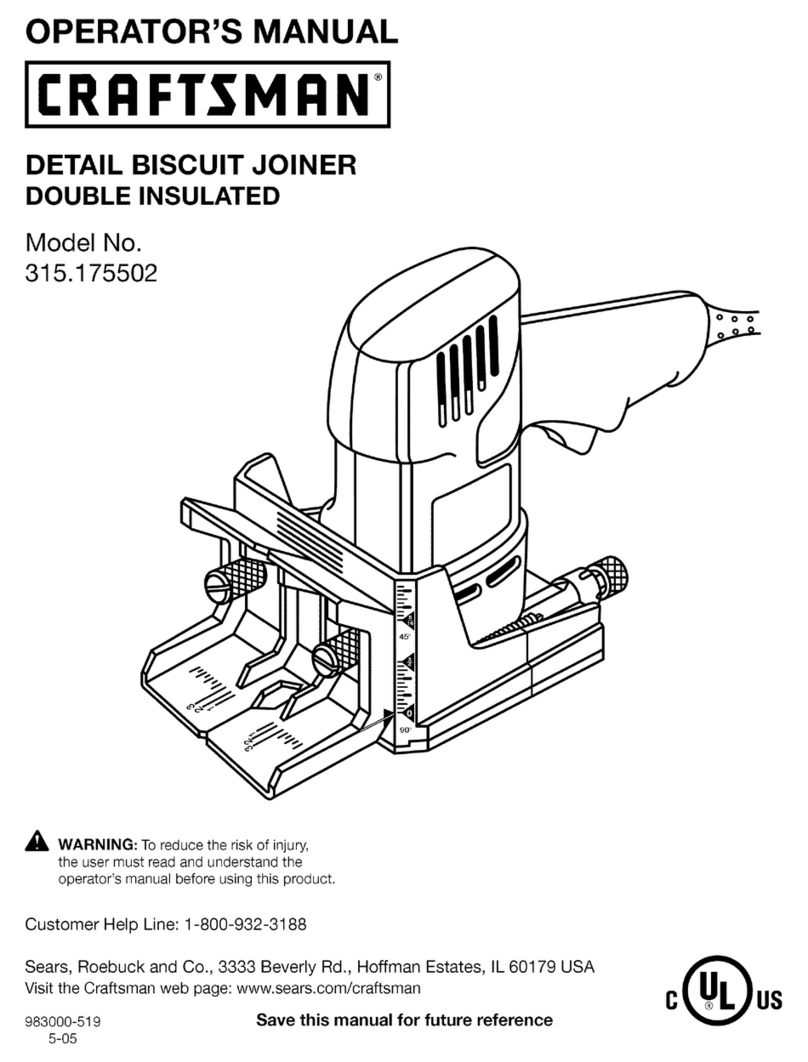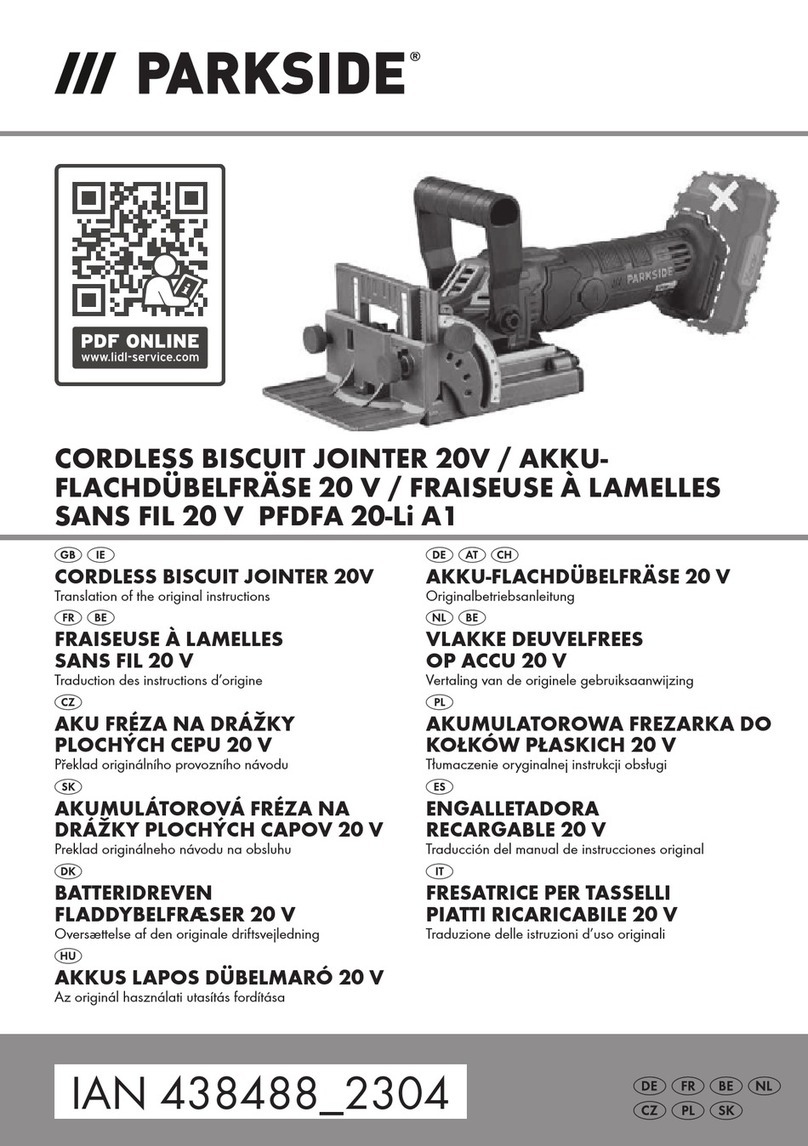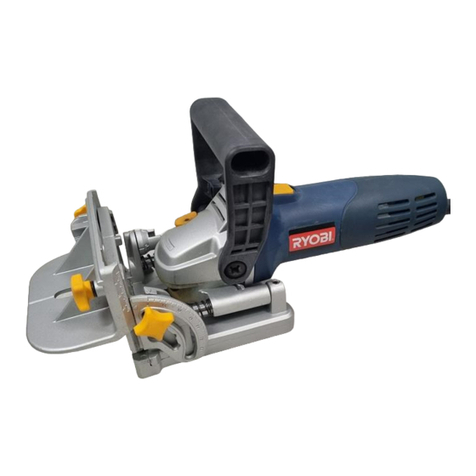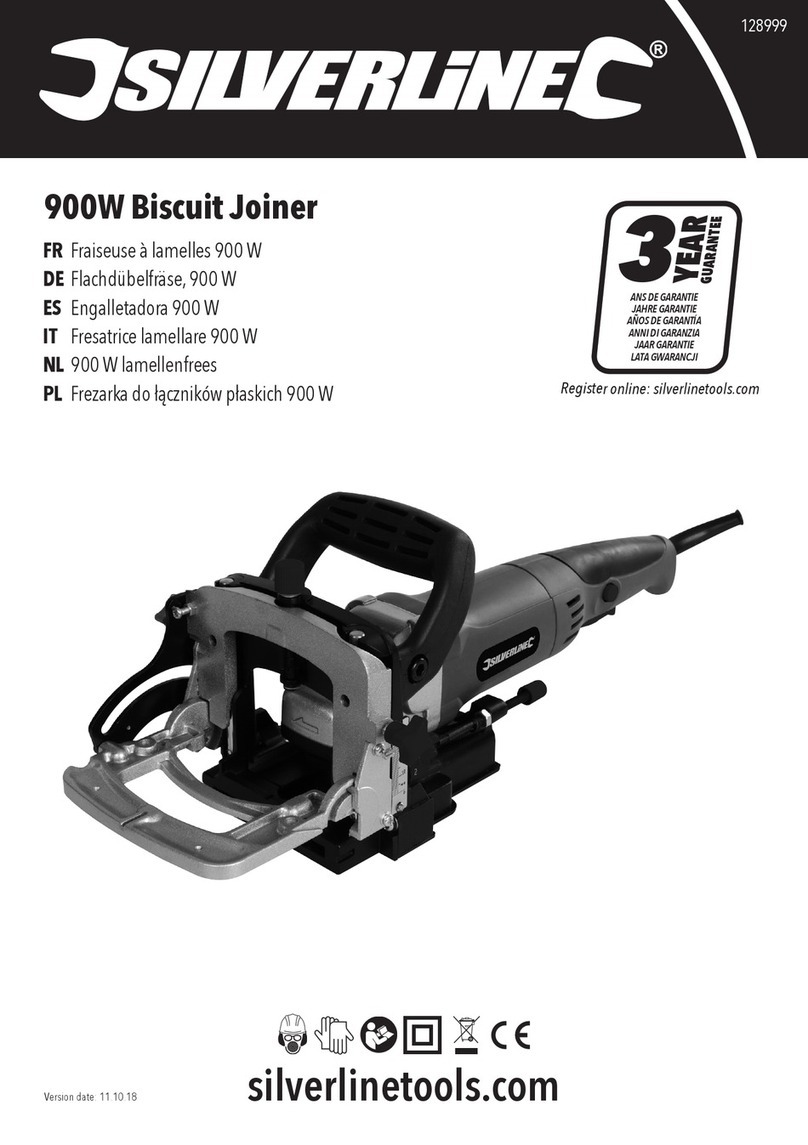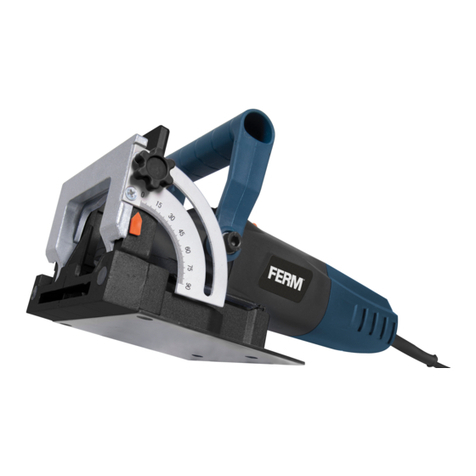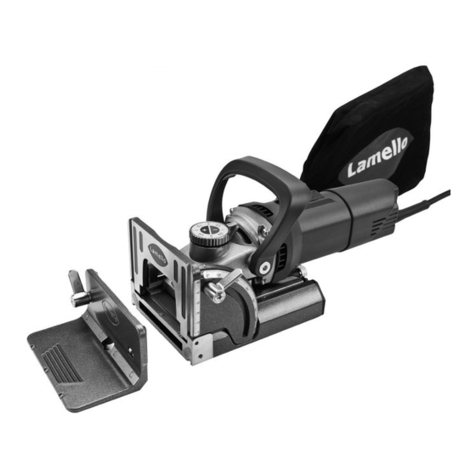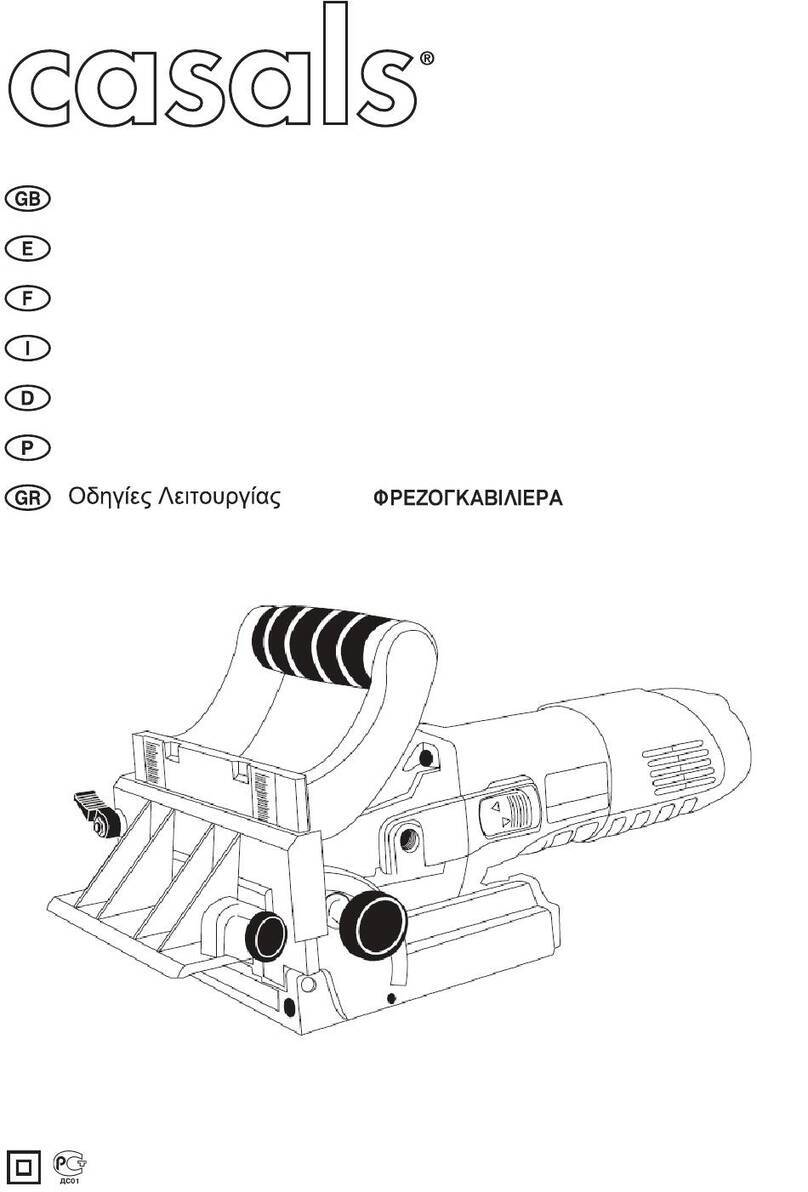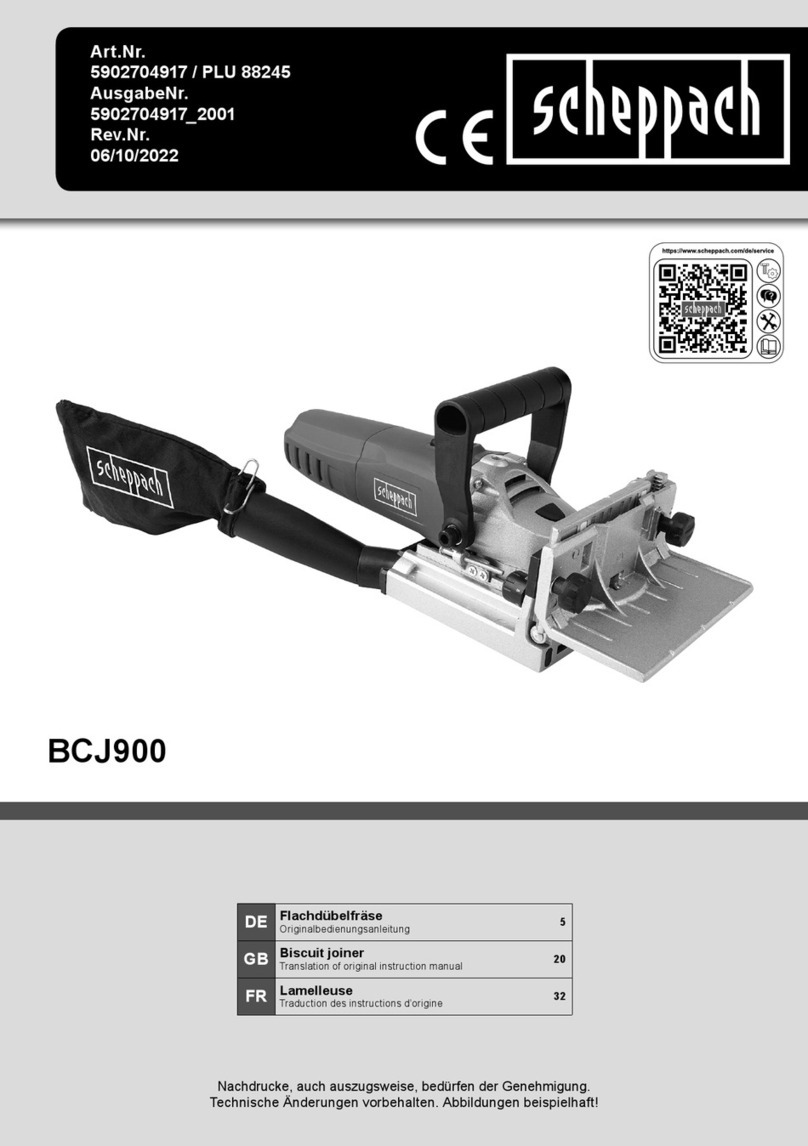
011951 Page 2 of 24
ENGLISH
!
WARNING: When using electric tools, machines or equipment, basic safety
precautions should always be followed to reduce the risk of re, electric shock,
and personal injury.
READ ALL INSTRUCTIONS BEFORE USING THIS TOOL
KEEP WORK AREA CLEAN. Cluttered areas invite injuries.
CONSIDER WORK AREA ENVIRONMENT. Don’t use power tools in damp,
wet, or poorly lit locations. Don’t expose your tool to rain. Keep the work area
well lit. Don’t use tools in the presence of ammable gases or liquids.
KEEP CHILDREN AND BYSTANDERS AWAY. All children should be kept away
from the work area. Don’t let them handle machines, tools or extensions cords.
Visitors can be a distraction and are difcult to protect from injury.
GROUNDED TOOLS must be plugged into an outlet that itself is properly
installed and grounded. Grounding provided a low-resistance path to carry
electricity to ground away from the operator, should the tool malfunction
electrically. Do not remove the grounding prong from the plug or alter the plug
in any way. If in doubt as to whether the outlet is properly grounded according
to code, check with a qualied electrician.
OBSERVE PROPER PRECAUTIONS REGARDING DOUBLE INSULATION.
This tool is double insulated. It is equipped with a polarized plug. One blade is
wider than the other, so it will t into a polarized outlet only one way. If you have
difculty inserting the plug, try reversing it. If it still doesn’t t, do not alter the
plug; have a qualied electrician install a polarized outlet.
GUARD AGAINST ELECTRIC SHOCK. Prevent body contact with grounded
surfaces: pipes, radiators, ranges, and refrigerator enclosures. When your body
is grounded the risk of electric shock increases. When working wherever “live”
electrical wires may be encountered, try to ascertain whether there is a danger
of shock. Even so, DO NOT TOUCH ANY METAL PARTS OF THE TOOL while
using it. Hold the tool only by the plastic grip to prevent electric shock if you
contact a live wire.
DO NOT ABUSE THE CORD. Never carry your sander by the cord or pull
on the cord to unplug it. Protect the cord from potential sources of damage:
heat, oil & solvents, sharp edges, or moving parts. Replace damaged cords
immediately.
WHEN WORKING OUTDOORS, USE AN OUTDOOR-RATED EXTENSION
CORD. An extension cord rated for outdoor use must be marked “W-A” or “W”.
DO NOT EXPOSE ELECTRICAL POWER TOOLS TO MOISTURE. Rain or wet
conditions can cause water to enter the tool and lead to electric shock.
ENSURE THE EXTENSION CORD YOU USE IS OF SUFFICIENT GAUGE
FOR ITS LENGTH.
STORE IDLE EQUIPMENT. Store equipment in a dry area to inhibit rust.
Equipment also should be in a high location or locked up to keep out of reach of
children.
DON’T FORCE THE TOOL. It will do the job better and more safely at the rate
for which it was intended.
1.
2.
3.
4.
5.
6.
7.
8.
9.
10.
11.
12.
IMPORTANT SAFETY INSTRUCTIONS
Recommended Minimum Wire Gauge for Extension Cords
Amps from Tool Nameplate 25' length 50' length 75' length 100' length 150' length 200' length
0-5 amps 16 ga. 16 ga. 16 ga. 14 ga. 12 ga. 12 ga.
5.1-8 amps 16 ga. 16 ga. 14 ga. 12 ga. 10 ga. Do Not Use
8.1-12 amps 14 ga. 14 ga. 12 ga. 10 ga. Do Not Use Do Not Use
12.1-15 amps 12 ga. 12 ga. 10 ga. 10 ga. Do Not Use Do Not Use
15.1-20 amps 10 ga. 10 ga. 10 ga. Do Not Use Do Not Use Do Not Use
